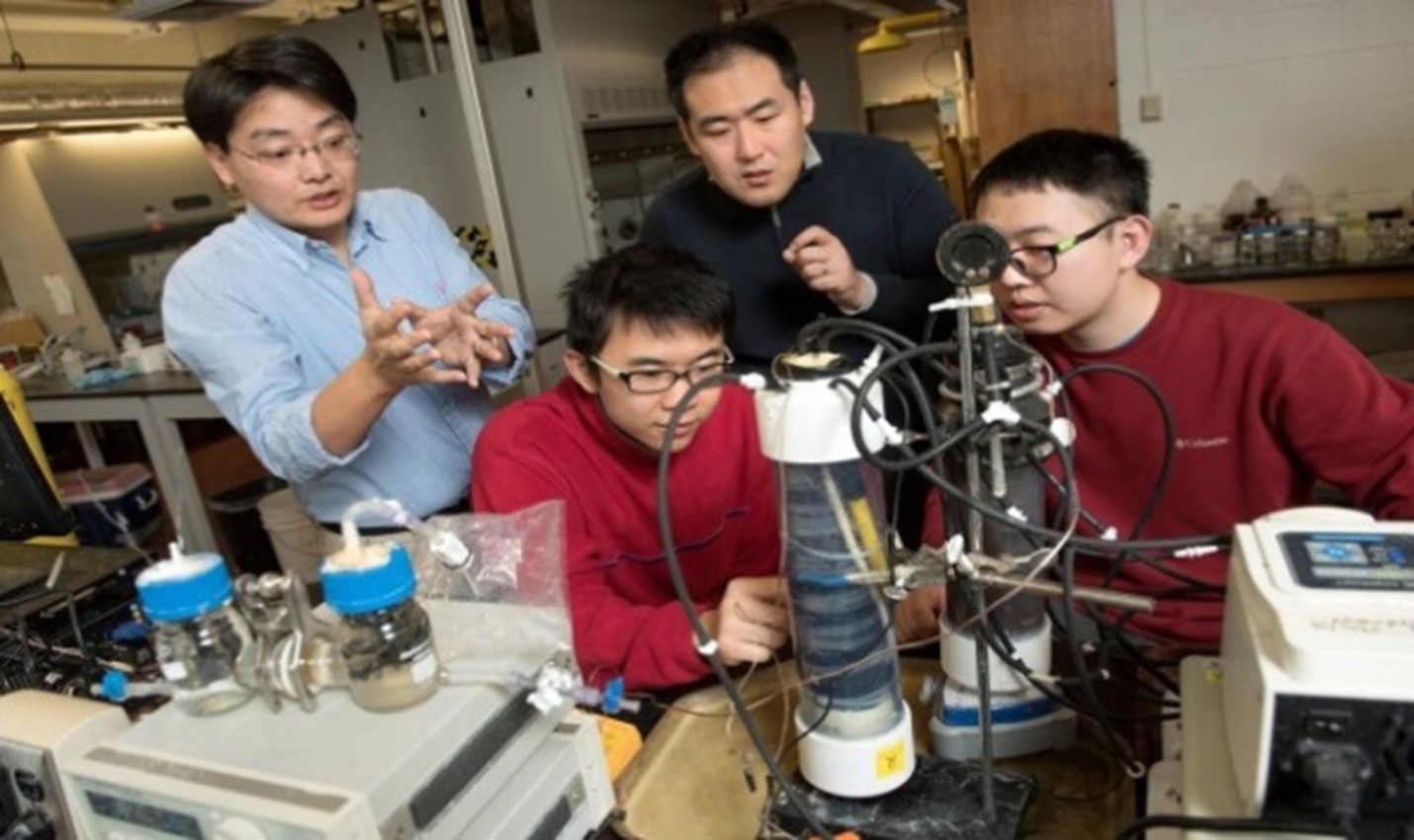Increasing Energy Recovery to Reduce Energy Burden in Wastewater Treatment

By Shuai Luo, PhD student of the Department of Civil and Environmental Engineering, member of Water IGEP, Virginia Tech
Water and energy are two major resource issues due to insufficient provision in some places, especially the developing countries. Moreover, inappropriate wastewater treatment exacerbates the problem because it accounts for massive electrical energy load, estimated at 3% of the electrical consumption in the U.S. In general, the energy needs for a typical domestic wastewater treatment plant using aerobic activated sludge treatment and anaerobic sludge digestion is 0.6 kWh/m3 of treated wastewater. How to reduce the electrical consumption in wastewater treatment is a significant part of the effort to reduce the worldwide energy burden.
The energy potential existing in wastewater itself may introduce a new pathway to recover the energy from wastewater treatment, since it is estimated that a theoretical 3.86 kWh energy production /kg chemical oxygen demand (COD) oxidized in wastewater leads to potential conversion from chemical potential to heat or electrical energy for humans to use. Anaerobic sludge digestion is one of the common methods used to convert organics to methane, which can be collected and then burned for electricity production. However, the digestion of anaerobic sludge has the drawback of low conversion efficiency, with only 30 to 40 % becoming electricity. How to increase the electricity generation efficiency from wastewater is needed to achieve sustainable energy self-supply for wastewater treatment.
Another technology, microbial fuel cells (MFCs), comes at the right moment to potentially solve the problem. MFCs are an emerging technology that takes advantage of microbes to convert organics in wastewater to electrical energy. Inside the system, electrochemically active bacteria (EAB) serve as effective microbial catalysts to process the chemical reactions, and extract the electrons from organics to solid electron acceptors for current generation. The system can be placed as the secondary anaerobic treatment stage for the wastewater treatment. It is estimated that MFCs have higher energy conversion efficiency than an anaerobic sludge digester, estimated up to 44%. However, the conversion efficiency is not improved to a significant extent. More modifications are needed to help MFCs become more applicable in the wastewater treatment plant.
To improve the energy output of MFCs, our research group, Environmental Biotechnology & Bioenergy Laboratory (EBBL) of the Charles E. Via, Jr. Department of Civil and Environmental Engineering at Virginia Tech, aims to find a solution to improve the system output of MFCs. We found that the pattern of organic supply significantly impacts the power output. We used a modeling bacteria, Shewanella oneidensis MR-1, a frequently used EAB, to study the effect of different living conditions for the working mechanism of EAB in MFC. To assist the research on the working mechanism of S. oneidensis MR-1 in MFCs, we utilized a 13C tracer experiment, which is a method widely used to facilitate the elucidation of metabolic pathways in various environmental microorganisms. We found that by combining the organic supply of formate and lactate as a substrate, S. oneidensis MR-1 had a greater energy conversion than when it was only supplied with lactate or formate. Through the 13C tracer experiment, we learned that the lactate is responsible for the microbial growth, while formate can be extracted for greater electron production and collection. The results show that the co-supply of two substrates affects the behaviors of extracellular electron transfer (EET), and ultimately the electricity generation in the MFC, implying that there is synergy in substrates. These results demonstrate that the increased electricity generation with using combined formate with lactate was not simply “1 + 1 = 2”; instead, the combination achieved “1 + 1 > 2”. Mutually complementary substrates may take advantage of substrate interaction in the cell metabolism, and generate a total effect greater than the sum of the individual contribution of a single substrate for electricity generation. This raises the question if other combinations of synergistic substrates also exist to enhance the MFC performance for pure or mixed cultures.
In summary, for future wastewater treatment, MFCs are a promising technology to convert the organic potential to electricity. Adding some synergistic substrate (e.g., formate) is also promising to improve the power generation. The working mechanism of MFC needs further research to optimize the working conditions of EAB in MFCs and thus to improve the electrical output. Further research can be guided based on the aforementioned discovery to improve the electricity generation. Our research group will still spare no effort on how to better recover the renewable resources for energy production.
For more information, you can refer the following links:
Journal publication in Scientific Reports: http://www.nature.com/articles/srep20941
News introduction: http://wvtf.org/post/keeping-energy-going-down-drain#stream/0
Video Linking: https://www.youtube.com/watch?v=yh-67zu-kx4


